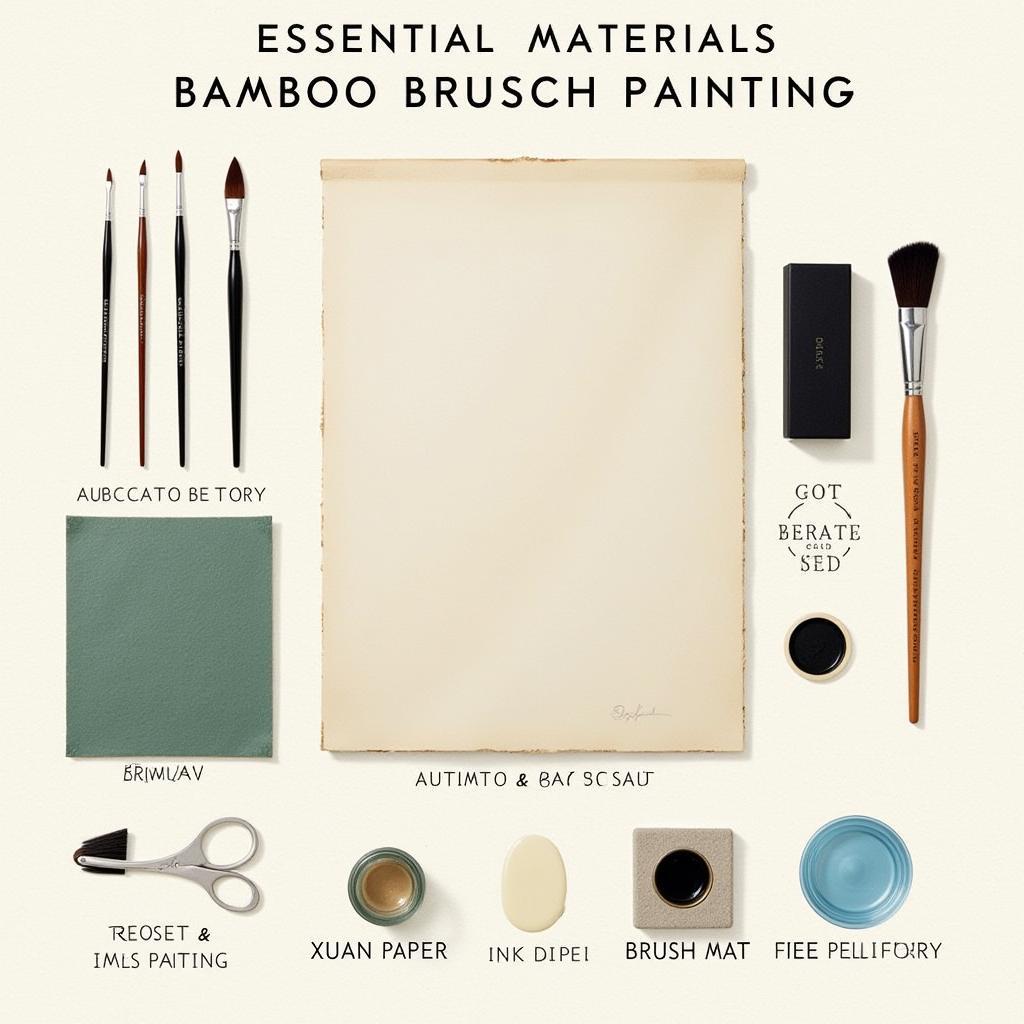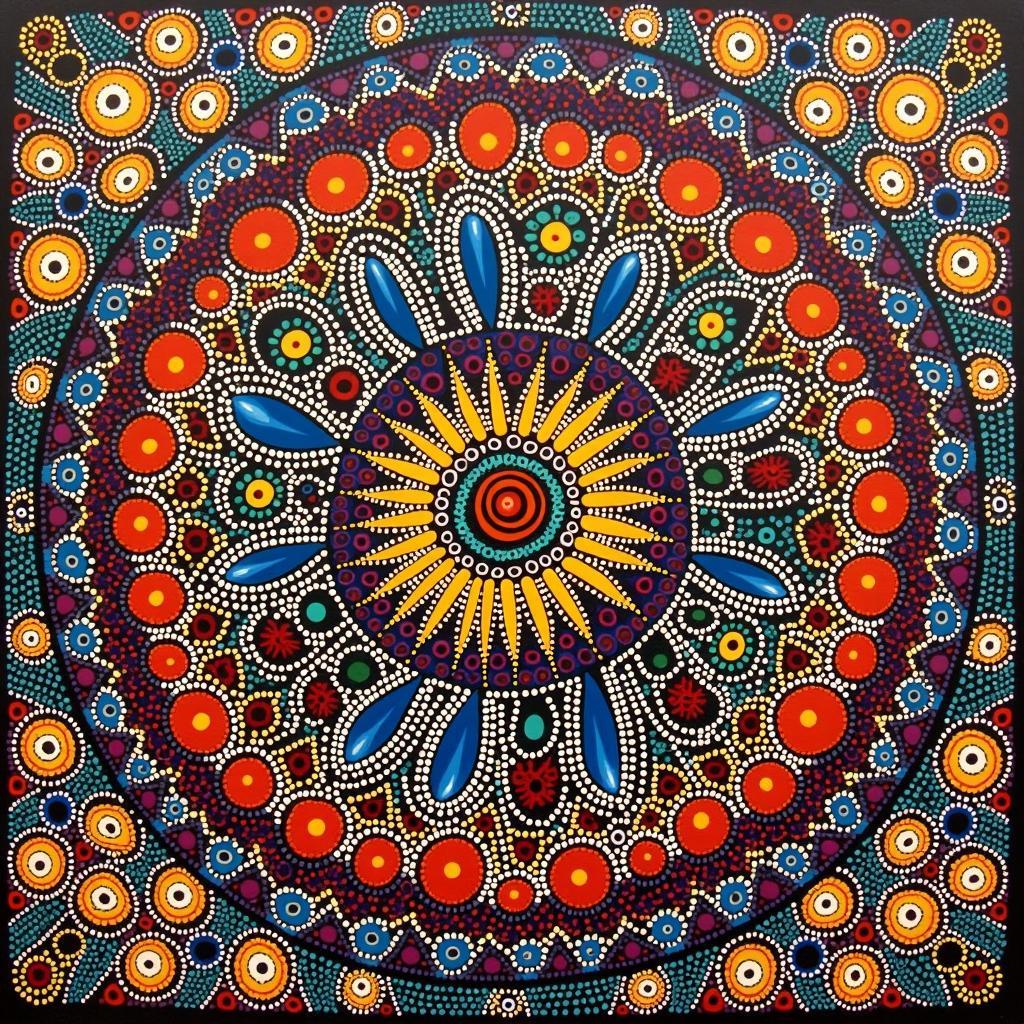Mastering the Art of Bamboo Brush Painting
Bamboo Brush Art, a cornerstone of East Asian art, captivates with its elegant simplicity and profound depth. This ancient practice transcends mere decoration, transforming the humble bamboo stalk into a powerful symbol of resilience, flexibility, and spiritual growth. Whether you’re a seasoned artist or a curious beginner, exploring the world of bamboo brush painting offers a rewarding journey of artistic discovery. After reading this article, you will understand the fundamental techniques and artistic philosophies behind this captivating art form.
As artists, we constantly seek eco friendly art supplies to minimize our environmental impact. Bamboo, a rapidly renewable resource, aligns perfectly with this ethos. Its inherent qualities make it the ideal medium for brush painting, allowing for a wide range of expressive strokes and textures.
Unveiling the Secrets of Bamboo Brush Art
Bamboo brush painting requires more than just technical skill; it demands a deep understanding of the bamboo itself. Observing its growth in nature, its swaying in the wind, and the subtle variations in its form is crucial to capturing its essence on paper. This intimate connection with nature is at the heart of bamboo brush art. Each stroke of the brush becomes a meditation, a conversation between the artist and the subject.
 Bamboo Brush Painting Basic Strokes
Bamboo Brush Painting Basic Strokes
The choice of brush and ink is equally important. Traditional Chinese brushes, made from natural materials like goat, wolf, or rabbit hair, offer a unique responsiveness and control. The ink, typically black ink stick ground on an inkstone, allows for subtle gradations of tone and texture, adding depth and dimension to the artwork.
Essential Techniques for Bamboo Brush Art
Mastering the art of bamboo brush painting involves learning a series of fundamental strokes. These strokes, combined with variations in ink consistency and brush pressure, form the building blocks of any bamboo painting. From the delicate lines of the leaves to the strong, decisive strokes of the stalks, each element contributes to the overall composition and meaning of the artwork.
Mastering the Brushstrokes
- The Leaf Stroke: A light, swift movement of the brush tip creates the delicate leaves, capturing their fluttering movement in the wind.
- The Stem Stroke: A controlled, downward stroke with varying pressure defines the structure and strength of the bamboo stalk.
- The Joint Stroke: A short, horizontal stroke marks the nodes of the bamboo, adding a sense of realism and detail.
Practicing these strokes repeatedly is essential for developing muscle memory and achieving fluidity in your brushwork. Don’t be afraid to experiment with different brush angles, ink consistency, and pressure to discover your own unique style.
Exploring the Symbolism of Bamboo in Art
Beyond its aesthetic appeal, bamboo holds deep symbolic meaning in East Asian cultures. Its resilience in the face of adversity, its ability to bend without breaking, and its rapid growth make it a powerful metaphor for strength, flexibility, and perseverance. In art, bamboo often represents these qualities, serving as a reminder of the importance of adapting to change and staying grounded in the face of challenges. Check out some examples of antique japanese art for further inspiration.
The Spiritual Significance of Bamboo
Bamboo also holds spiritual significance, often associated with virtues such as humility, integrity, and longevity. Its hollow stem is seen as a symbol of emptiness and receptivity, while its upward growth represents the pursuit of enlightenment.
Bamboo Brush Art: Materials and Tools
Before starting your journey into the world of bamboo brush art, you’ll need to gather the necessary materials. Choosing high-quality eco friendly art supplies will enhance your creative experience and contribute to sustainable art practices.
- Brushes: Select a variety of brushes, including those with fine tips for leaves and broader brushes for stalks.
- Ink: Traditional ink sticks and inkstones offer a rich, nuanced black ink. Liquid ink is also a convenient option.
- Paper: Xuan paper, a traditional Chinese paper known for its absorbency, is ideal for bamboo brush painting.
- Other Supplies: You’ll also need a water container, a brush rest, and a felt mat to protect your work surface. If you are thinking of displaying your art, you may need art gallery name plates.
 Bamboo Brush Painting Materials and Setup
Bamboo Brush Painting Materials and Setup
Conclusion
Bamboo brush art offers a captivating journey into the heart of East Asian art and philosophy. By mastering the essential techniques and understanding the symbolism behind this ancient practice, you can unlock your creative potential and express yourself through the elegant simplicity of bamboo. So, pick up your brush, connect with nature, and begin your own exploration of the art of bamboo brush painting. You might find inspiration from oversized textured wall art to explore different textures and styles.
FAQ
- What type of paper is best for bamboo brush art? Xuan paper is the preferred choice due to its absorbency.
- What is the significance of bamboo in art? Bamboo symbolizes resilience, flexibility, and spiritual growth.
- What are the basic brushstrokes for bamboo painting? Key strokes include the leaf stroke, stem stroke, and joint stroke.
- What kind of ink is used in bamboo brush art? Traditionally, black ink stick ground on an inkstone is used.
- Where can I find eco-friendly art supplies for bamboo brush painting? Many online and physical stores specialize in eco-friendly art materials.
- How can I improve my bamboo brush painting skills? Practice regularly and study the work of master artists.
- What is the cultural significance of bamboo brush art? It’s a revered tradition in East Asian art, reflecting philosophical and spiritual values.
Common Situations and Questions
- Difficulty with ink consistency: Ensure your inkstone is properly prepared and experiment with different grinding techniques.
- Brush control challenges: Practice basic strokes repeatedly to develop muscle memory and control.
- Understanding bamboo anatomy: Observe real bamboo plants to familiarize yourself with their structure and growth patterns.
Further Exploration
You might be interested in other art forms like tiki poster art for a different cultural perspective.
Contact Us
For assistance, contact us at Phone: 02462573573, Email: [email protected] Or visit us at Savico Megamall, 7-9 Đ. Nguyễn Văn Linh, Gia Thụy, Long Biên, Hà Nội 10000, Việt Nam. We have a 24/7 customer service team.




